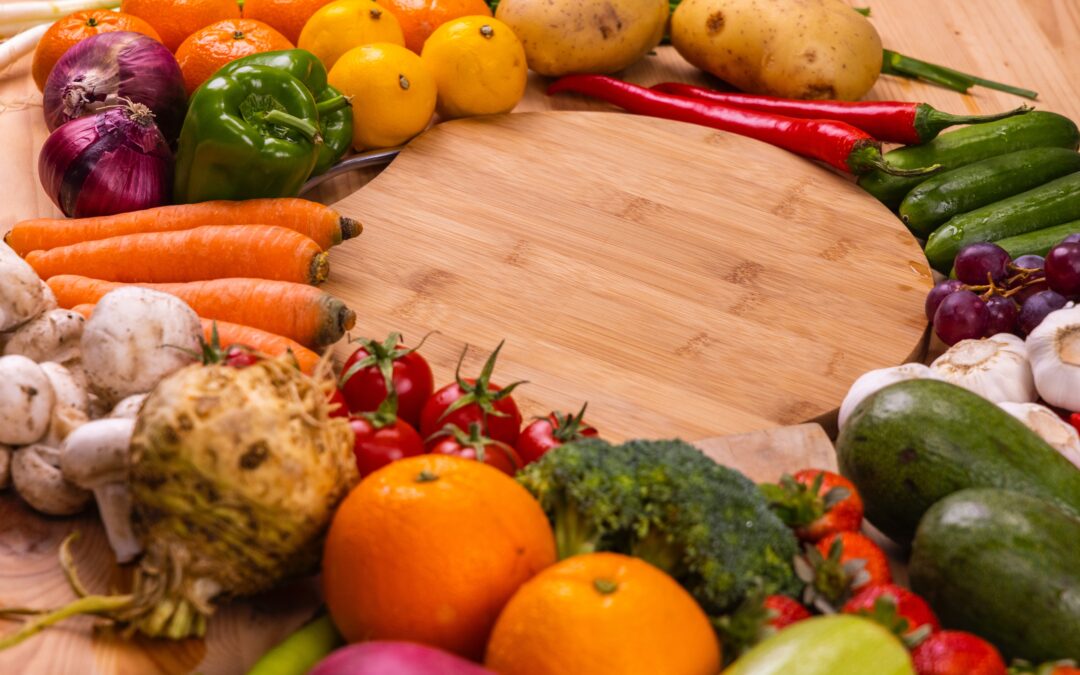Endometriosis now affects approximately 1 in 9 women (1). This amounts to around 200 million women worldwide with diagnosis taking anywhere from 7-12 years (1).
Irritable bowel syndrome (IBS) and endometriosis share many common features- low grade inflammation, visceral hypersensitivity, gut pain, bloating, distension, and altered bowel habits (2). These shared symptoms may contribute to the delay in diagnosis and additionally women may receive a label of IBS prior to receiving an endometriosis diagnosis. Some studies suggest that women can suffer both these conditions concurrently (3).
Usefulness of the FODMAP diet
Information from a 2017 review showed a FODMAP diet can be useful in up to 80% of IBS sufferers (4,5). When considering women with both endometriosis and IBS, however, eating a low FODMAP diet can assist in up to 72% of this subgroup. Differences in bowel symptoms appears to be the main benefit with >50% improvement after four weeks compared with 49% in those with no known endometriosis (2,3).
FODMAP is the term used for certain easily fermented short chain carbohydrates (Fermentable oligosaccharides, disaccharides, monosaccharides and polyol’s). There are currently two theories as to how they may trigger symptoms in the intestines.
- Small bowel theory-states that FODMAP’s are not easily absorbed and attract water osmotically into the small bowel triggering or exacerbating bloating and distension, this leads to a faster bowel transit time, and impairs absorption (6).
- Large bowel theory-describes FODMAP’s reaching the large intestines unabsorbed where they then get fermented by bowel bacteria causing gas production, flatulence, and bloating (6).
The mechanism behind the relief obtained from IBS like symptoms with removal of FODMAP foods is currently being researched however, alteration of both the gut flora and metabolism compounds are suspected as the main mechanism (7).
Considerations with FODMAP diet
Removing such a large number of beneficial foods for periods longer than 4-6 weeks has the potential to affect nutrient intake and negatively affect the colony of bowel bacteria. This is due in part to lower fibre intake (8,9) and part to simply reduction of beneficial nutrients from the removed foods.
Ensuring the correct diagnosis is important prior to implementation of a FODMAP diet as improvement of symptoms may mask an incorrect diagnosis (9).
The FODMAP diet, like any diet, is not a one size fits all approach. There are several FODMAP components that a person may react to with a different severity and It is an evolving diet where many sources are outdated. It is therefore important to get professional support with a qualified Naturopath, Dietician or Nutritionist before undertaking the diet. A practitioner has access to certain tests and tools which can instruct clinical direction, although due to the current COVID 19 situation, access to practitioners may be restricted (10). Undertaking a FODMAP diet may also have an impact on social gatherings and long term adherence may cost considerably more than a “normal”diet (11).
A general overview of considerations for each of the FODMAP subtypes and implementation follows.
FodMAP subtypes and implementation
Use of an app offering a traffic light system of red (high), orange (medium) & green (low) FODMAP foods may assist with overwhelm when first starting the diet.
Oligosaccharides: (fructans and galacto-oligosaccharide) are usually an issue for a high number of people as humans do not have the enzymes to break either down causing bloating, abdominal pain and excessive wind. They are highly fermentable food components. These are found in foods such as wheat, rye, legumes, nuts artichokes, onion and garlic (9).
Disaccharide: (primarily lactose) found in dairy products. This requires the enzyme lactase to break down which can be suboptimal in certain ethnic backgrounds, or with advancing age, or intestinal inflammation (9).
Monosaccharide: (fructose) is the smallest FODMAP carbohydrate and has the ability to draw water slowly in across the length of the intestines which leads to distention, pain, bloating, diarrhoea and altered bowel motility (9). Fructose is found in high amounts in processed foods containing high fructose corn syrup (HFCS) which is often used as a sweetener. It is also found in high amounts in honey, sugar snap peas and fruits such as apples, pears, watermelon and mangos.
Polyols– (mannitol, sorbitol, xylitol, isomalt) are used primarily in sugar free foods especially chewing gum and mints. Polyols also can be found in apples, pears, stone fruits, snow peas, mushrooms and cauliflower (9).
Using a diet diary over a period of 6 weeks will usually identify which subgroup of FODMAPS is most problematic and an individual diet can then be constructed with re-introduction of some foods possible at this stage hence adopting a RA RA approach- remove assess, reintroduce assess.
Clinically some practitioners will be working on reducing inflammation during this removal stage, although this has not currently been studied to confirm or deny any additional benefits.
Long terms goals in IBS are to reintroduce high FODMAP foods to personal tolerance level (11), however this has not been studied in concurrent IBS & Endometriosis and warrants further investigation.
Summary
Implementing a FODMAP diet for endometriosis may show some relief of symptoms in women who have concurrent IBS or IBS-like symptoms. Seeking the help of a professional trained in implementation together with a downloadable app may assist with successful outcomes.
Undertaking the diet short-term is more likely to negate any detrimental effect of removal of food groups and nutrients. Further long term studies are needed especially in subgroups of women who suffer both conditions.
Please see below for a recipe by our amazing ambassador Hoda Hannaway!
 Almond, Orange Blossom, and Lemon Tart
Almond, Orange Blossom, and Lemon Tart
Serves: 8 -10
Prep Time: 20 mins
Cook Time: 45 mins
Ingredients
For the base:
- 1 cup Almond Meal
- 1.5 cups Coconut Flour
- 175g Butter, melted
- Pinch Salt
- 3 tbs White Sugar
- 3 tbs Water
- For the Lemon Topping:
- 3 Large Eggs, lightly beaten
- 1/3 cup freshly squeezed Lemon Juice (about 2-3 lemons)
- 1 cup Granulated Sugar
- 2 tbs Orange Blossom Water
- ¼ cup Gluten free plain flour
- 1-2 tbs white sugar for brulee
 Method
Method
- Preheat oven to 180 degrees Celsius.
- For the base, place all the ingredients in a bowl, mix to combine. Press in a large tart tin, place in fridge until required.
- To make the lemon topping, whisk together eggs, lemon juice, sugar and flour until smooth. Pour evenly over baked crust.
- Bake for 20-25 mins or until Lemon topping is just set. Remove from oven and allow to cool completely in fridge.
- To serve, sprinkle additional sugar and with a blow torch** brulee the top of the tart. Serve with a dollop of cream.
** Notes
If you don’t have access to a blow torch, you can brulee the tart under the grill or leave this part out completely.
Written by nutritionist, naturopath, and herbalist Tracy Gaibisso & Low FODMAP recipe provided by Hoda Hannaway
Article References
1) Endometriosis Australia Research Noticeboard
2) Saidi K, Sharma S, Ohlsson B. 2020: A systematic review and meta-analysis of the associations between endometriosis and irritable bowel syndrome. Eur J Obstet Gynecol Reprod Biol. Mar;246:99-105.
3) Moore JS, Gibson PR, Perry RE, Burgell RE, 2017: Endometriosis in patients with irritable bowel syndrome: Specific symptomatic and demographic profile, and response to the low FODMAP diet. Aust N Z J Obstet Gynaecol. Apr;57(2):201-205.
4) Altobelli E, Del Negro V, Angeletti PM, Latella G. 2017: Low-FODMAP Diet Improves Irritable Bowel Syndrome Symptoms: A Meta-Analysis. Nutrients. Aug 26;9(9):940.
5) Staudacher HM, Whelan K. 2017: The low FODMAP diet: recent advances in understanding its mechanisms and efficacy in IBS. Gut. Aug;66(8):1517-1527.
6) Varjú, P., Farkas, N., Hegyi, P., Garami, A., Szabó, I., Illés, A., Solymár, M., Vincze, Á., Balaskó, M., Pár, G., Bajor, J., Szűcs, Á., Huszár, O., Pécsi, D., & Czimmer, J. 2017: Low fermentable oligosaccharides, disaccharides, monosaccharides and polyols (FODMAP) diet improves symptoms in adults suffering from irritable bowel syndrome (IBS) compared to standard IBS diet: A meta-analysis of clinical studies. PloS one, 12(8),
7) Reddel, S., Putignani, L., & Del Chierico, F. 2019: The Impact of Low-FODMAPs, Gluten-Free, and Ketogenic Diets on Gut Microbiota Modulation in Pathological Conditions. Nutrients, 11(2), 373.
8) Nanayakkara WS, Skidmore PM, O’Brien L, Wilkinson TJ, Gearry RB. 2016: Efficacy of the low FODMAP diet for treating irritable bowel syndrome: the evidence to date. Clin Exp Gastroenterol.Jun 17;9:131-42.
9) Barrett JS. 2017: How to institute the low-FODMAP diet. J Gastroenterol Hepatol. Mar;32 Suppl 1:8-10.
10) Mathew Leonardi, Andrew W Horne, Katy Vincent, Justin Sinclair, Kerry A Sherman, Donna Ciccia, George Condous, Neil P Johnson, Mike Armour. 2020: Self-management strategies to consider to combat endometriosis symptoms during the COVID-19 pandemic, Human Reproduction Open, Volume 2020, Issue 2.
11) O’Keeffe M, Jansen C, Martin L, Williams M, Seamark L, Staudacher HM, Irving PM, Whelan K, Lomer MC. 2018: Long-term impact of the low-FODMAP diet on gastrointestinal symptoms, dietary intake, patient acceptability, and healthcare utilization in irritable bowel syndrome. Neurogastroenterol Motil. Jan;30(1).

